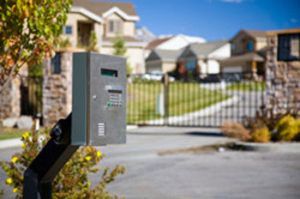
Another main function of the board is to maintain common area within an association. Common area may include greenbelts, floral landscape, open space areas, recreational facilities and streets. The funds for maintaining these areas are generated through collection of assessments. The decision on how this maintenance is performed is left up to the board. The board need not go it alone, however.
Boards are entitled to rely on the opinions of experts in performing common area maintenance. The board can hire engineers, financial experts, architects or other experts to determine the proper method for performing any particular maintenance required. Boards may also enlist volunteer owners who are willing to perform the necessary research to find available options for required maintenance. These committees can report back to the board with two to three best options to allow the board to make the ultimate decision.
The board should be clear that the committee will prepare the information and present it to the board for the final decision. This will prevent committee members from believing that they will make the ultimate decision. Use of committees in this regard can raise community involvement, allow motivated owners to participate and alleviate some of the board’s workload.
Because of financial concerns, boards often defer maintenance for large items; this should be avoided! Deferred maintenance will result in increased costs to the association if the item fails before it can be repaired. Emergency repairs are almost always more expensive than repairs or maintenance performed with advanced planning and under schedule. Boards should use a reserve study to prepare appropriate short and long term plans for addressing maintenance responsibilities. With proper planning, boards can avoid most unforeseen or emergency assessments.
Without planning for repairs, a special or emergency assessment may be necessary. The board will have a better chance of achieving owner approval for a large special assessment for maintenance purposes if it has kept the owners informed. While informed owners may not like writing a check for the special assessment, they will be more likely to understand its importance.
Owners must understand that maintenance of the common areas is one of the main responsibilities of the association and one of the many ways that the Board can protect the assets of the association. As such, owners should not interfere with common area maintenance by modifying common area landscaping or attempting to modify common area equipment. If owners notice that landscaping maintenance is lax or that a common area component (e.g. pool heater) is not working properly, they should inform the board so it can arrange to have the issue addressed or the item repaired. Because the board cannot be everywhere all the time, notices of deficiencies from owners are very important. Boards should always follow up on notices received from owners regarding common area deficiencies.
Owners must also understand that the board hires the association’s vendors. As the contracting party, the board is responsible for ensuring that the landscapers, roofers and other vendors perform according to contract. Having not generally reviewed the contract, owners may expect something from the vendor that is not required under the contract. For example, owners may want the walkway to their residence swept or blown clear of debris. While some landscape contracts may require such work, this may not always be the case. Owners should ask their board what is required under the contract instead of confronting vendors. This may result in potential liability for interference with the associations’ contract and may not accomplish the desired result.
In addition to common area maintenance, some boards are also responsible for maintaining areas within individual lots – often referred to as “common maintenance areas.” This type of shared maintenance is often the source of contention within communities. Because the area is physically located on an owner’s lot, the owner may believe he or she is entitled to make landscaping changes to the area, even though the documents of the association may prohibit such landscaping. Installing items or performing maintenance in these areas may result in owner liability.
Another item of contention is when an association fails to perform maintenance in the common maintenance areas, leaving the owner’s lot in a less than desirable state. In such an instance, the owner may wish to perform the maintenance that the board has failed to perform. Owners need to resist this urge!
On the other hand, boards should not allow common maintenance areas to fall into disrepair. Because these areas are so intimately intertwined with an owner’s property and home, failures in maintenance are almost always noticed before failures in other areas. Boards should try to place these maintenance areas at the top of their priority lists. If an owner notices a failure in this area, the owner should notify the board immediately and the board should take steps to address the problem as soon as possible.
While common area maintenance is easy to speak about in theory, in reality, the issues are much more complex. For example, what one owner believes is appropriate landscaping for his or her lot may not be in line with the beliefs of the board or with the acceptable landscaping palette for the community. Under the governing documents, ultimately the decision lies with the board. That being said, the board would do well to recognize differences within the community and to make an effort to accommodate owner requests to the extent they do not result in a hodge-podge community look and/or increase the cost of maintenance.
